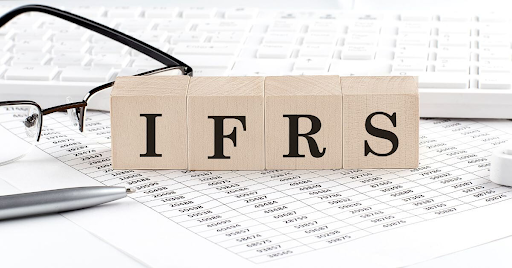In June 2023, the International Sustainability Standards Board (ISSB) introduced two pivotal standards—IFRS S1 and IFRS S2—marking a significant move towards globally consistent sustainability reporting. These standards provide an investor-focused framework to help organisations disclose sustainability- and climate-related risks and opportunities in a transparent, standardised manner. As more jurisdictions adopt the IFRS sustainability standards, understanding how IFRS S1 integrates with existing ESG frameworks—and what it means for corporate strategy—has become essential for businesses aiming to stay ahead.
IFRS S1: A Foundation for ESG Integration
IFRS S1 sets out the general requirements for sustainability-related disclosures across all industries. It compels companies to identify and report material sustainability risks and opportunities that could impact enterprise value. In doing so, it aligns closely with frameworks such as the SASB (Sustainability Accounting Standards Board) and GRI (Global Reporting Initiative), which also emphasise industry-specific and stakeholder-relevant reporting.
What sets IFRS S1 apart is its focus on general sustainability, encompassing environmental, social, and governance (ESG) dimensions—not just climate-related issues. From labour practices and human rights to anti-corruption policies and board-level governance, the standard provides a structured approach for companies to present a comprehensive picture of their ESG posture.
IFRS S2: Climate-Specific Reporting Aligned With TCFD
Building on the broader disclosures required by S1, IFRS S2 zeroes in on climate-related risks and opportunities. Crucially, it incorporates the widely adopted recommendations of the Task Force on Climate-related Financial Disclosures (TCFD). For businesses already familiar with TCFD reporting, this alignment means a smoother transition to IFRS S2, with minimal disruption to existing processes.
IFRS S2 requires disclosures around climate scenario analysis, strategy resilience, and performance indicators such as greenhouse gas (GHG) emissions. Companies are encouraged to evaluate how different climate scenarios could affect their operations and strategy—linking financial performance to climate resilience and preparedness.
Aligning With Existing ESG Frameworks
One of the key strengths of IFRS S1 and S2 lies in their interoperability with existing ESG frameworks:
- TCFD: IFRS S2 mirrors the TCFD structure—covering governance, strategy, risk management, and metrics and targets—making the integration process intuitive for companies already using TCFD.
- SASB: Industry-specific disclosure guidance within IFRS S1 draws directly from SASB’s sector-based approach, ensuring consistency across different industries.
- GRI: While GRI adopts a stakeholder-focused and double materiality approach, IFRS is designed through an investor-centric lens. However, businesses can meet both sets of expectations using integrated platforms such as Speeki, which supports multi-framework reporting.
This compatibility enables organisations to reduce duplication, streamline reporting efforts, and respond to varied stakeholder and regulatory demands with greater efficiency.
Speeki’s Role in Simplifying Compliance
Transitioning to IFRS-aligned sustainability reporting can be complex—especially for companies unfamiliar with detailed, accounting-style disclosures. Speeki provides a robust digital solution that helps organisations build ESG programmes aligned with IFRS S1 and S2 while continuing to support TCFD, GRI, and other frameworks.
Speeki allows businesses to manage a wide range of ESG themes—including climate change, biodiversity, pollution, labour rights, supply chain ethics, and data protection—within a single platform. It offers tools for GHG tracking, materiality assessments, and sustainability governance monitoring.
The platform’s AI-driven features further enhance efficiency by automating materiality assessments, helping organisations cut down on manual effort and focus on strategic ESG goals.
What It Means for Businesses
Adopting IFRS S1 and S2 is not merely about compliance—it’s a strategic move that enhances resilience, transparency, and investor confidence. These standards encourage businesses to consider how sustainability risks influence their financial performance and long-term value creation.
Key benefits include:
- Increased transparency: A uniform set of disclosure standards improves data consistency and comparability for investors and stakeholders.
- Enhanced risk management: Integrated reporting enables organisations to embed sustainability into enterprise risk frameworks in line with ISO 31000 principles.
- Strategic planning: Climate scenario analysis under IFRS S2 equips companies with the tools to assess various future conditions and build resilient strategies.
- Global relevance: As regulators worldwide embrace IFRS S1 and S2, businesses that adopt early will enjoy smoother market access and fewer compliance hurdles.
Conclusion
IFRS S1 and S2 represent a new chapter in ESG reporting—offering a globally coherent framework that brings consistency to a previously fragmented landscape. Their alignment with existing standards like TCFD, SASB, and GRI provides a practical and familiar starting point for many businesses.
With platforms like Speeki, organisations can simplify compliance, elevate their ESG performance, and provide the transparency that today’s investors and stakeholders expect. In a world where sustainability is becoming a cornerstone of corporate strategy, aligning with IFRS S1 and S2 is not just the right step—it’s a competitive advantage.

















































